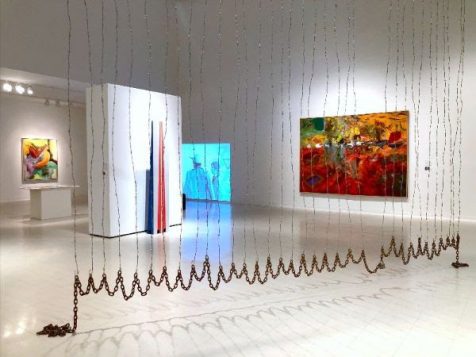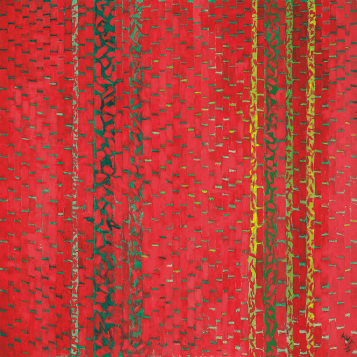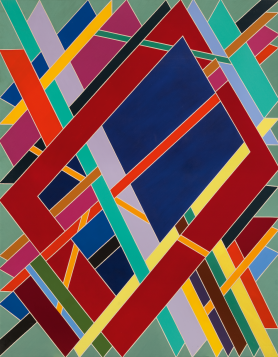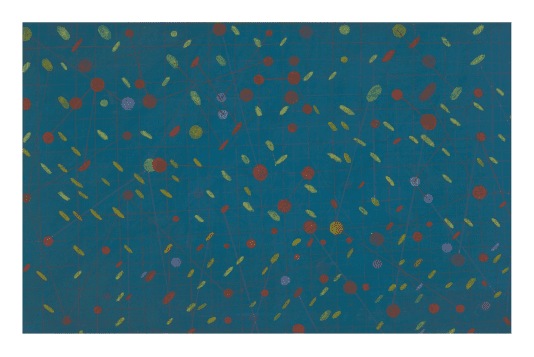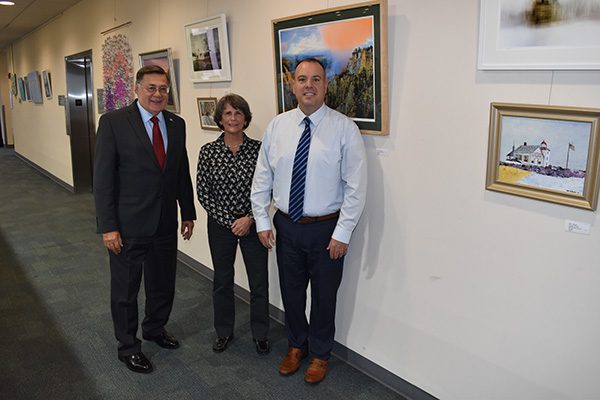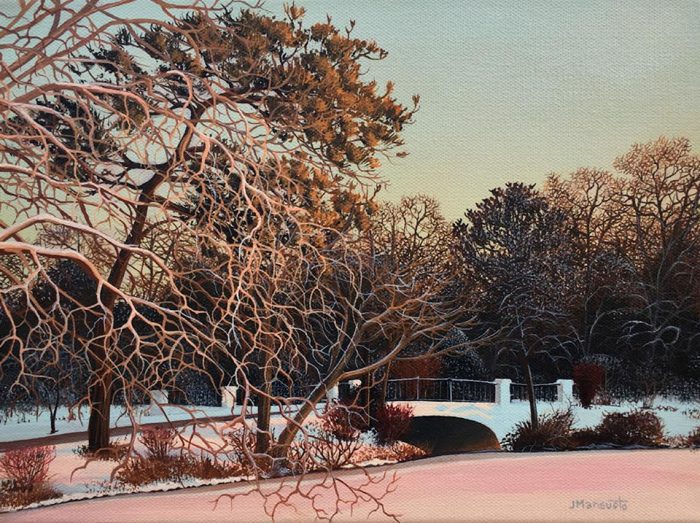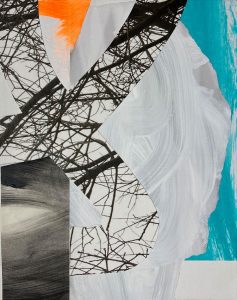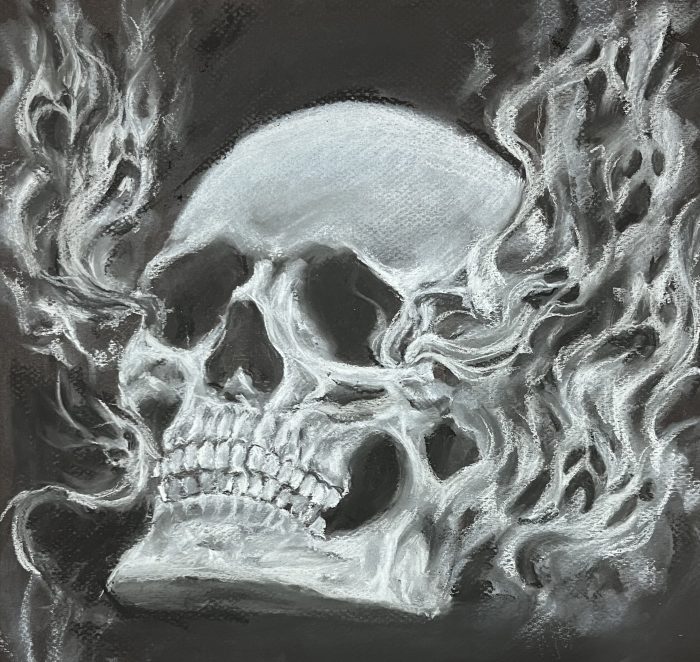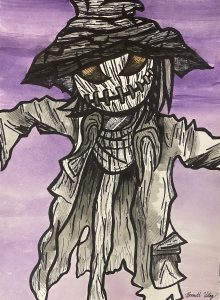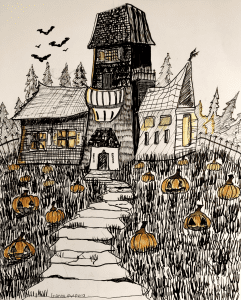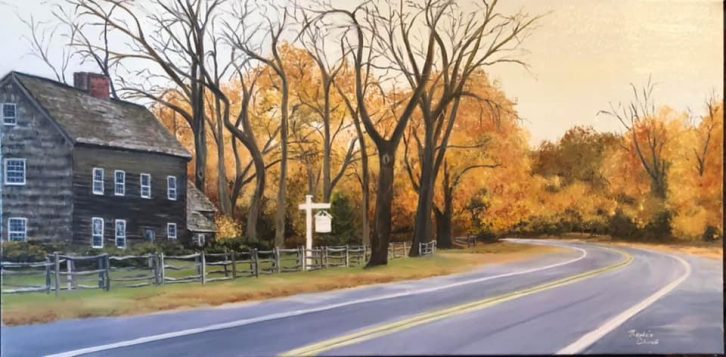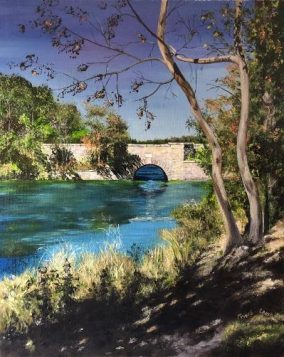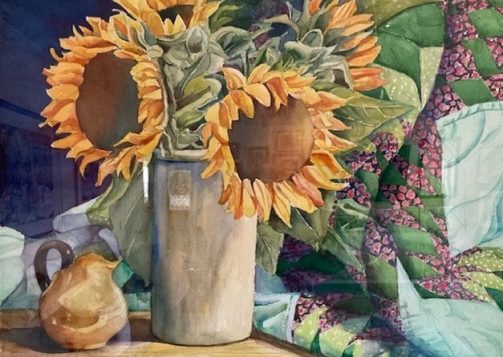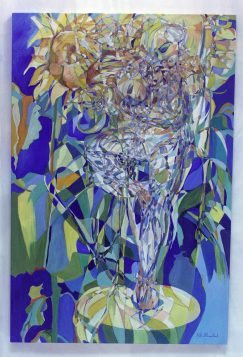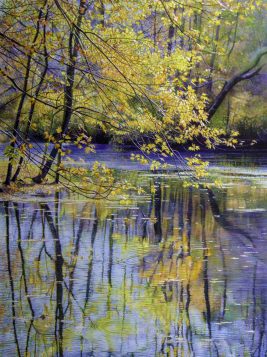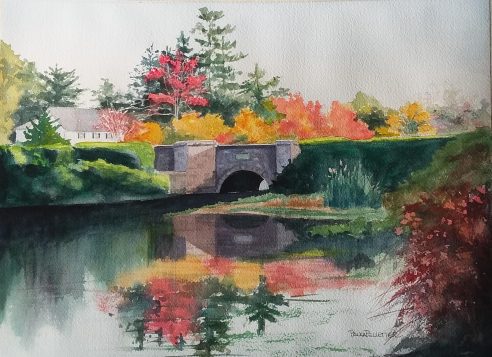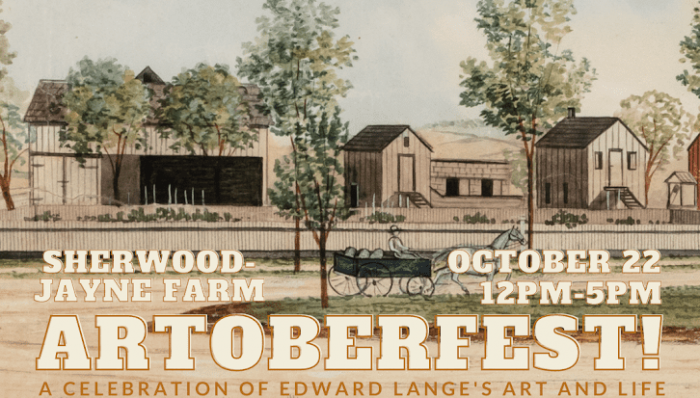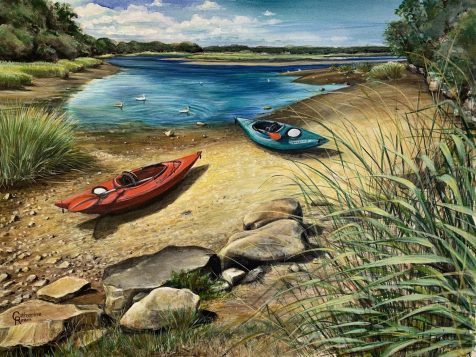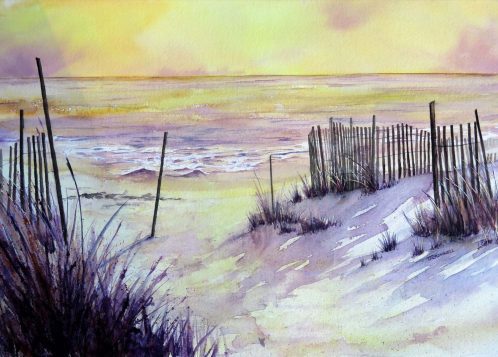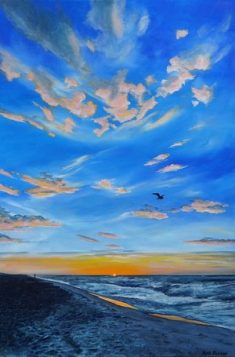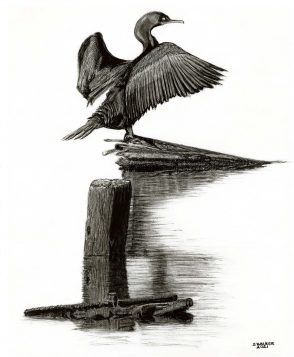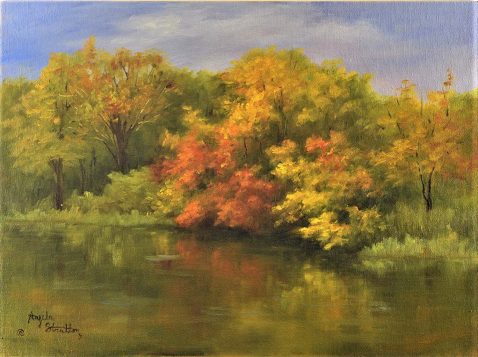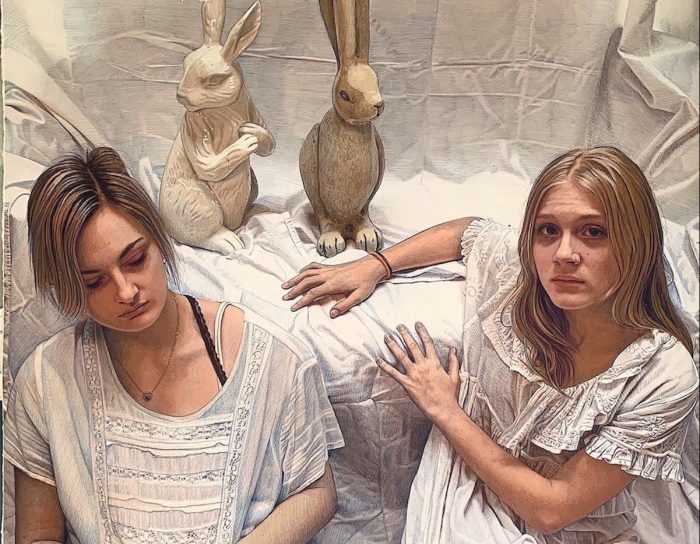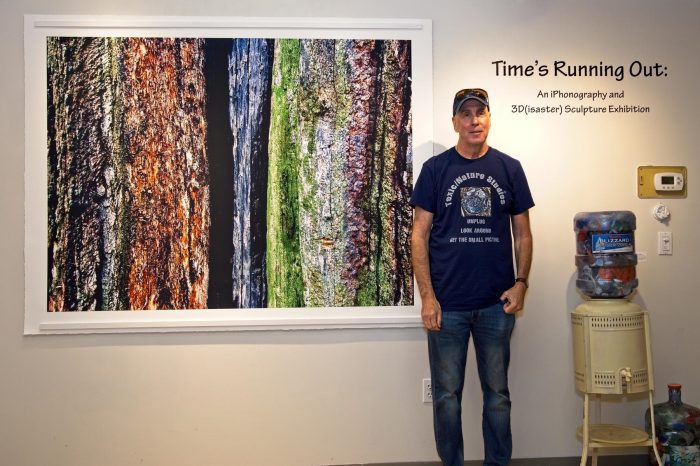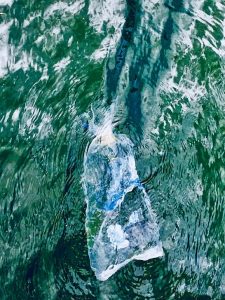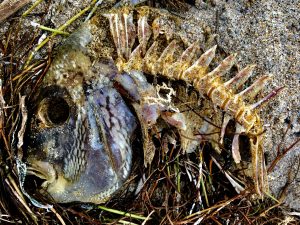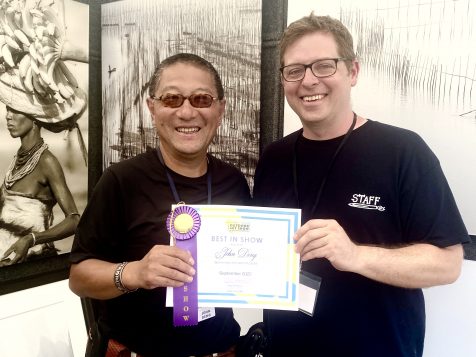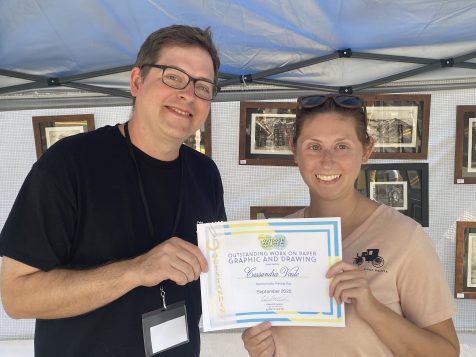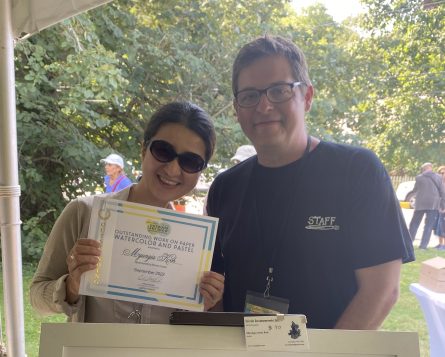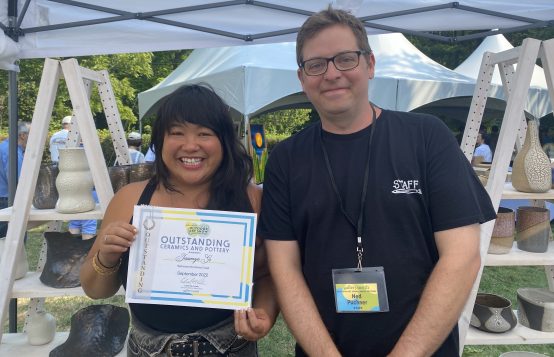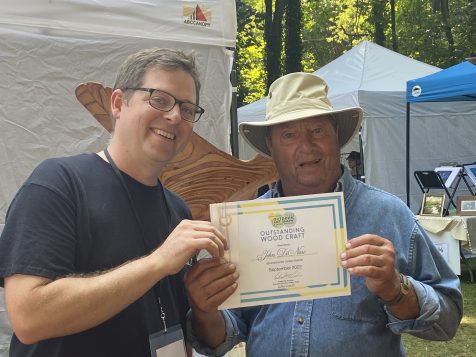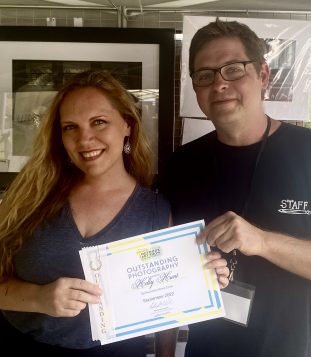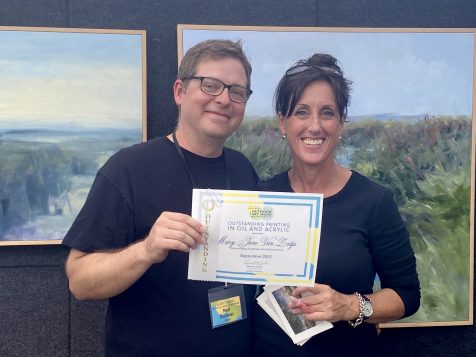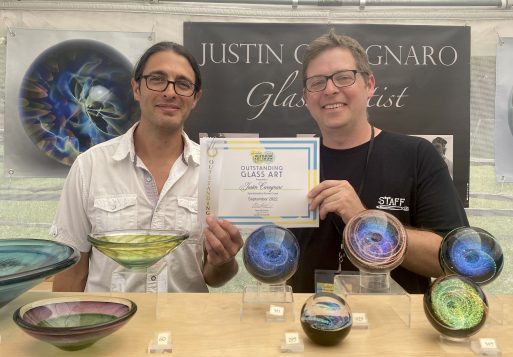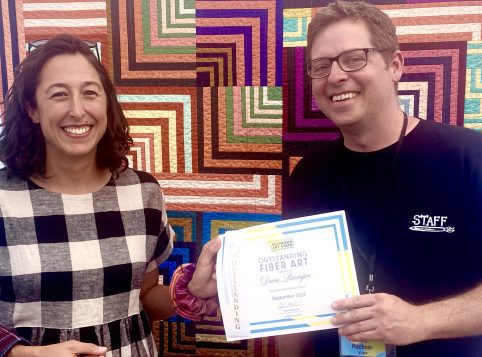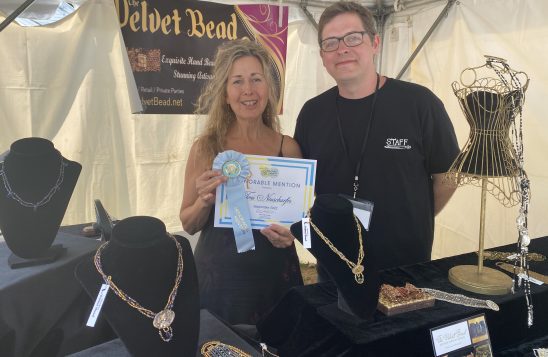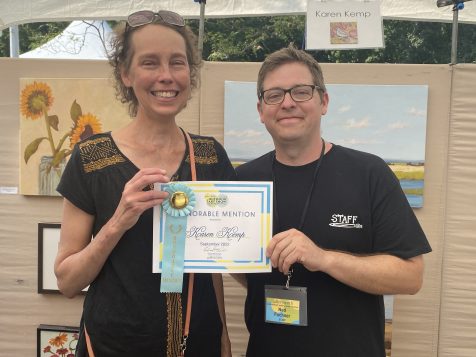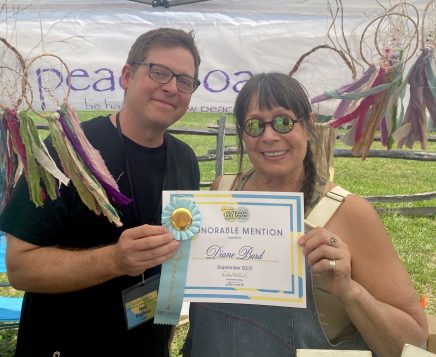The Staller Center’s Paul W. Zuccaire Gallery recently opened a new exhibition entitled Revisiting 5+1, developed in conjunction with the Museum of Fine Arts, Boston’s current feature exhibition, Frank Bowling’s Americas.
Examining a critical moment at the junction of abstract art, racial and gender politics, and student activism at Stony Brook University, Revisiting 5+1 is a reflection on the historic 1969 exhibition of abstract art 5+1, presenting works by the original artists, alongside a new selection of major works by Black women working in abstraction.
Revisiting 5+1 features work by the six artists in the 1969 exhibition (curated by and including artist Frank Bowling) each of whom created vivid experimental abstract paintings and sculptures. Alongside Bowling, the show presents major work by Melvin Edwards, Daniel LaRue Johnson, Al Loving, Jack Whitten, and William T. Williams, showcasing their early practices of the 1960s and ‘70s. In collaboration with Distinguished Professor of Art Howardena Pindell, Revisiting 5+1 adds a related yet distinct group of six Black women artists, who were also trailblazers in abstraction. Alongside Pindell, the exhibition features works by Vivian Browne, Mary Lovelace O’Neal, Betye Saar, Alma Thomas, and Mildred Thompson, including a never before shown 1971 film by Saar.
Photographs of the 1969 exhibition by Adger Cowans and Tina Tranter and original archival research present new findings on 5+1, while university records and photographs provide contextual history of the concurrent Black Student Movement taking place on campus. The 1969 exhibition coincided with the first semester of courses in a new Black Studies Program, created in response to student activism.
Revisiting 5+1 provides new insight into the significance of the dynamic university context, demonstrating the important history of university-based exhibitions organized by Black artists. At a time when Black artists working in abstraction encountered barriers in both the White mainstream art world, which valued works in abstraction but not those by Black artists, and the Black Arts Movement, which rejected abstract art as apolitical, university galleries provided a unique platform outside the confines of the mainstream art world for engaging with ongoing debates around the relation between art and racial politics.
The accompanying catalog includes archival photographs of 5+1 by Adger Cowans and from the Frank Bowling Archive, four scholarly essays, and profiles of artists included in the exhibition, an interview with Howardena Pindell, as well as a tribute to Pindell’s achievements by Lowery Stokes Sims.
This exhibition honors Howardena Pindell’s four decades of working with art students at Stony Brook University on the occasion of her retirement from teaching. The artistic excellence and social activism that mark her own career have also informed her teaching, setting an example for students and faculty alike. Colleague Katy Siegel says of Pindell’s tenure, “The university has been extraordinarily fortunate to have Howardena’s brilliant presence over the years; she has brought in peers including Maren Hassinger and Kay WalkingStick, and taught generations of younger artists like Athena LaTocha with extraordinary generosity.” After the current academic year, Pindell will become a Toll Professor, leaving full-time teaching but remaining a student mentor.
The original 5+1 artists include Frank Bowling, Melvin Edwards, Daniel LaRue Johnson, Al Loving, Jack Whitten, and William T. Williams. Revisiting 5+1 also presents the work of Vivian Browne, Adger Cowans, Mary Lovelace O’Neal, Howardena Pindell, Betye Saar, Alma Thomas, and Mildred Thompson.
Revisiting 5+1 is curated by Stony Brook University Art History PhD candidates Elise Armani, Amy Kahng, and Gabriella Shypula in consultation with Distinguished Professor of Art Howardena Pindell and under the guidance of Katy Siegel, Distinguished Professor and Eugene V. and Clare E. Thaw Endowed Chair in Modern American Art, and Karen Levitov, Director and Curator of the Paul W. Zuccaire Gallery. The exhibition is supported by a grant from Stony Brook University’s Office of the President. Additional support is provided by a Humanities New York grant. A generous donation is provided by Hauser & Wirth Gallery, with additional funding from Garth Greenan Gallery, New York. Support is also provided by the Pollock-Krasner Foundation, Stony Brook University College of Arts and Sciences, Humanities Institute of Stony Brook, Art Department, and Department of Women’s, Gender and Sexuality Studies. The Paul W. Zuccaire Gallery’s 2022–2023 schedule is supported by a generous grant from the Paul W. Zuccaire Foundation.
Revisiting 5+1 is presented in partnership with the Museum of Fine Arts, Boston, in conjunction with the exhibition Frank Bowling’s Americas, on view at the MFA Boston from October 22, 2022 – April 9, 2023, and traveling to the San Francisco Museum of Modern Art from May 13 – September 10, 2023. A digital component and display case are presented in collaboration with the MFA Boston and the University of Massachusetts, Boston. Please check back for the digital component.
Hours: Monday-Friday 12-4pm and evenings of Staller Center performances and films. Email ZuccaireGallery@
For further information, please call the Zuccaire Gallery at (631) 632-7240 or email ZuccaireGallery@

